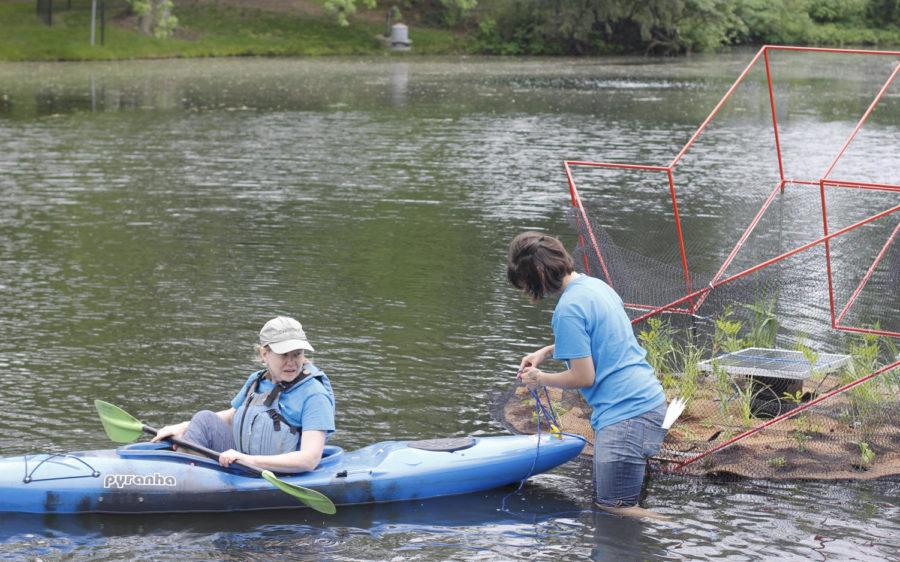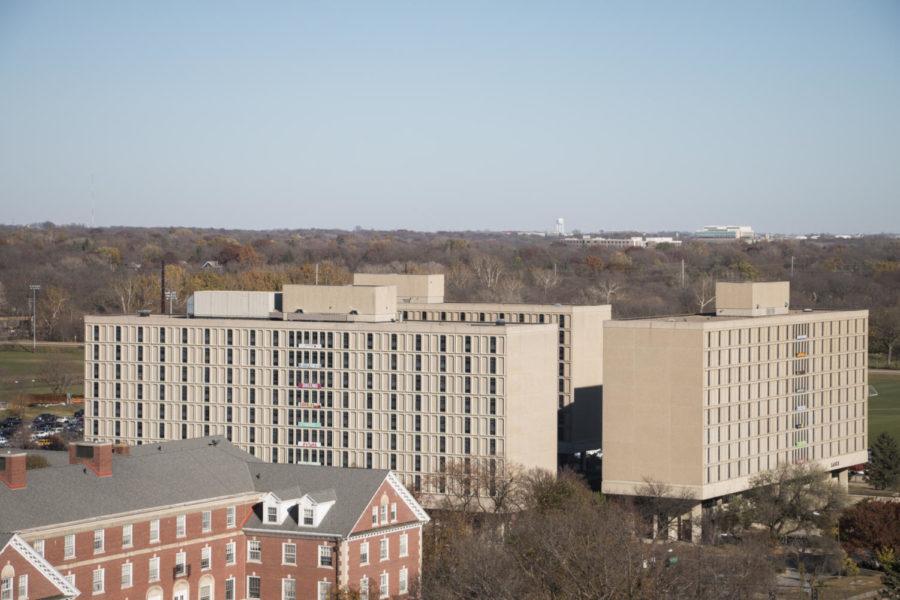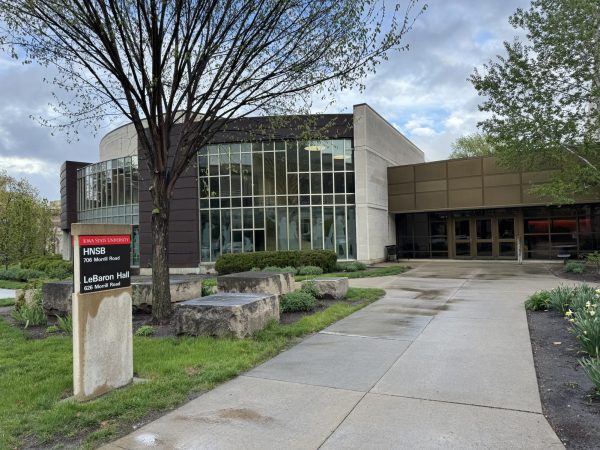ISU design team tests innovative pollution solution
May 28, 2015
Lake LaVerne has long been home to swans Lancelot and Elaine, but recently, it has become home to some rather unwelcome guests: algae blooms.
Caused by an excess of the nutrients nitrogen and phosphorus, these algae blooms are unsightly, can carry foul odors and can even harm wildlife if left unchecked. Even worse, Lake LaVerne’s pollution is “non-point,” meaning its origins are very difficult to trace.
In order to combat this serious problem, a group of ISU students and faculty have designed three vegetated floating islands to remove the problematic pollutants.
“Lake LaVerne is pretty much the perfect site for this type of project,” said Shelley Vrchota, a graduate student working on the islands.
Both the lake’s watershed — the area of land that drains water into the lake — and the lake itself are relatively small, making it a great testing ground for this groundbreaking solution.
The islands, each about as large as a king-size mattress, are made of coconut fiber bricks, PolyFlo [a filter that lets beneficial bacteria grow], buoyant marine foam and Iowa prairie plants. The plants’ roots, in conjunction with the bacteria, contact the water and act like a sponge to absorb the lake’s excess nutrients.
The islands also function as dynamic public artwork. Each VFI features a large arrow which lights up in the evening and spins with the lake’s current.
“We want a lot of people to be engaged, so by incorporating this public art component into a very complex issue, you’re engaging a much wider range of audiences,” said team member Rebekka Reuter.
VFIs can prove to be a versatile and cost effective solution to wide varieties of water pollution. Different types of plants absorb different types of pollutants, so islands can be tailored to a specific lake’s needs. They are much cheaper to install than artificial wetlands. Unlike artificial wetlands, VFIs take up absolutely no valuable land space. This makes a VFI an ideal solution for polluted lakes on farms.
“These islands, when they’re at the right ratio [to water’s surface area], are actually more effective than wetlands are,” Reuter said.
The islands are set to be removed in the fall in order to test their nutrient absorption. While their full benefits won’t be known until then, team member Xi Zhang has already noted some benefits.
“People are paying more attention to the lake and that’s a very good thing,” Zhang said.
More information can be found at the project’s website, www.laverne-islands.com and its Facebook page, www.facebook.com/laverneislands,

















